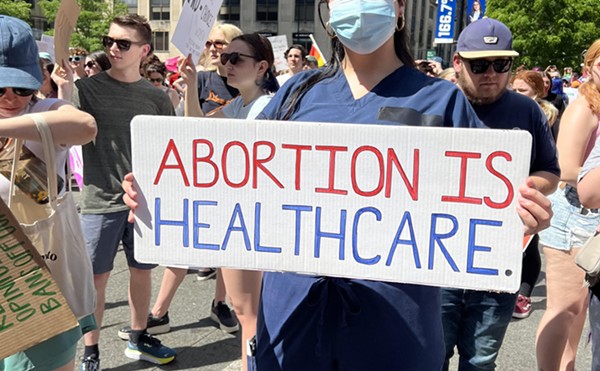Has the city of Cincinnati taken seriously the need to reform its police department? The first report by Saul Green, an independent monitor appointed by a federal judge, shows many of the city's promises remain unfulfilled.
One year after signing a memorandum of agreement (MOA) with the U.S. Department of Justice, the city has failed to implement important changes, according to Green. To be sure, some improvements have resulted, including better handling of incidents involving mentally ill people, his report says.
"In some significant areas, however, particularly on the crucial issue of a new use of force policy, the city did not meet the MOA deadlines," Green writes. "Moreover, after the initial flurry of activity to develop new policies in 2002, it appears that progress towards MOA compliance has slowed."
Police officers' use of force is the leading cause for criticism of the department. It was the police shooting death of an unarmed 19-year-old that led to the uprising in Over-the-Rhine in 2001. That tumult, in turn, led Mayor Charlie Luken to invite the Department of Justice to get involved.
In July 2002, the city proposed a new use of force policy.
But the Justice Department found it didn't meet the requirements of the agreement. The city submitted another revised policy in September 2002. That policy didn't meet the requirements either.
"The city requested additional time to revise its policy once again," Green writes. "A new deadline of January 24, 2003, was not met."
The deficiencies aren't mere paperwork problems; they're literally the stuff of flesh and blood — and gasping for air. The police department still doesn't adequately control its dogs, the use of chemical spray on people who have already been handcuffed or the use of "non-lethal" ammunition.
"In the same vein, the CPD Use of Force policy does not limit the use of beanbag shotguns and 40-millimeter foam round only to subdue or incapacitate subjects to prevent imminent physical harm to officers or to others, as required by the MOA," the report says.
The police department submitted yet another proposed improvement March 28 — two months after its extended deadline. Green will evaluate this policy in his next report.
The 89-page report is essential reading for anyone concerned about the causes of the uprising two years ago and how to prevent it from happening again. The report is available at www.gabsnet.com/cincinnatimonitor/.
With the city pressing ahead to hire more cops — despite a deliberate job slow-down by officers and a pressing budget deficit — reform is more important than ever. Green's report examines improvements and needs in handling citizen complaints, relations between the police department and the community and attitudes toward reform itself.
Luken and City Councilman John Cranley long ago took to bragging about the agreement as proof that the city has changed since the uprising. But more is needed, Green says.
"Implementation and compliance will take a greater commitment of time and resources," the report says.
When civil rights activists demanded the resignation of Police Chief Tom Streicher, city council instead praised his commitment to reform. Green's assessment is less positive.
"Chief Streicher must put his prestige and authority behind the agreements and empower those within the department who are responsible for implementing them," the report says. "Similarly, the city manager and the political leadership of the city must hold the chief and his command staff accountable for accomplishing the reforms required by the agreements."
With elections approaching, will voters hold city council accountable for not demanding reform from the chief?
BURNING QUESTIONS is our weekly attempt to afflict the comfortable.





